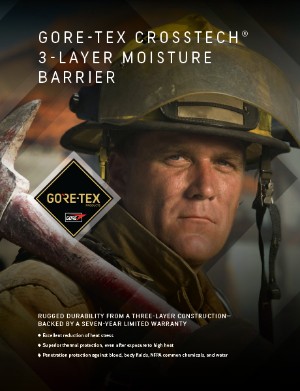The Economics of Leather Boots
In cases where departments may prefer leather boots for improved comfort and agility, budget constraints may result in settling for rubber boots with an initial cost between $100 and $200 less than leather. However, the cost of potential injury may not be considered in these decisions.
Based on a recent NFPA report of line-of-duty injuries, more than 14,700 firefighters (out of 1.1 million) were injured because of falls, slips, or jumps in 2011, and the National Safety Council has determined that the average cost for a slip/fall injury was $41,393.
Bringing these figures closer to home...in a department with 1,000 firefighters*, the above reports' data would suggest that approximately 12 members would have sustained a slip/fall injury in 2011, for a total cost of almost $500,000. Additionally, based on the data from the universities' research study, wearing leather boots instead of rubber can potentially lower a fire department's rate of slip/fall injury by 4 times – translating to saving your department $375,000, or $375 per firefighter.
Data suggests that spending $100 to $200 for premium leather boots can increase traction, reduce the number of injuries, and potentially save $375 in medical costs – not to mention the lost time incurred and hardship for fellow firefighters!
*Individual department size and statistics may vary.
 GORE-TEX CROSSTECH 3-Layer Moisture Barrier Flyer_CT2048.0217.2.pdf
Download PDF
Heat and Flame
Fire & Safety
GORE-TEX CROSSTECH®
GORE-TEX CROSSTECH Garments for Firefighters
GORE-TEX CROSSTECH 3-Layer Moisture Barrier Flyer_CT2048.0217.2.pdf
Download PDF
Heat and Flame
Fire & Safety
GORE-TEX CROSSTECH®
GORE-TEX CROSSTECH Garments for Firefighters

































































